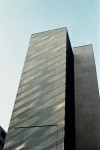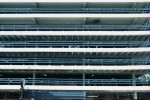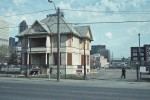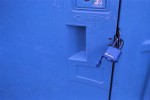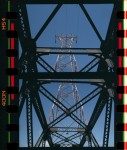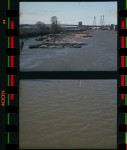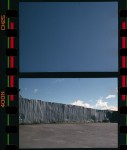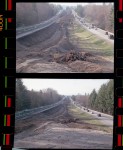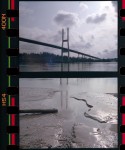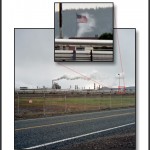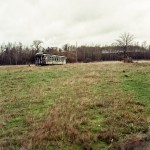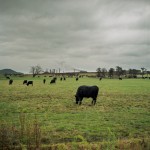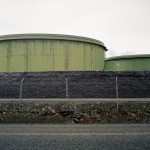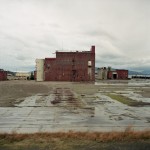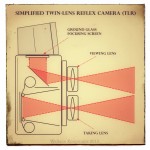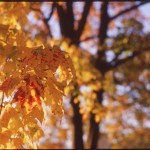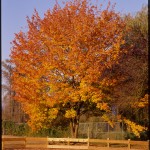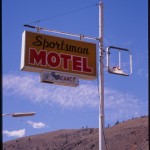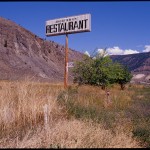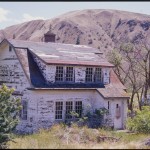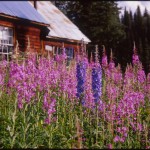May
26
2013

Adox’s Color implosion film is marketed as having ‘a modified color scheme’ from there website translated to english:
Place your camera to ISO 400/27 °. The color option of your memory film implodes and you get images with very little color and “Toxic Grain”. This awaits you if you belichtest Color implosion with your Holga.
Now I don’t know what blichtest means but it doesn’t sound good and I don’t like anyone telling me I have to use a Holga.
So the second suggestion which might have been what I was after is.
Place your camera to ISO 200/24 °. Now everything explodes red, while the others remain in the green-blue color. “Toxic Grain” is red.
If you like share with your laboratory staff that you would like the movie “supercharge plus 1”. “Bursting Red” also in your Holga
Still I don’t want anything bursting in my Holga if I had one, so I went with the third option.
Place your camera to ISO 100/21 °. Now makes Color implosion for you beautifully surreal 70s summer colors. The “Toxic Grain” is now yellow and not as concise.
By the way this is what ‘Toxic Grain’ looks like 
While I had hoped for the reds to really stand out, they ended up being quite muted, perhaps because of my choice to shoot at 100 ISO. I’ve set a few of those images aside for a future post where I show the difference between the raw scans and the edited files. For those I boosted the red channel to more closely match my expectations. But without further ado(x) here are the images I belichtested.
5 comments | tags: adox, film, Photography | posted in Photography, Processing, Uncategorized
Apr
18
2013
Taking two pictures that go together is an added challenge that I enjoy. Sometimes it works and sometimes it doesn’t. I tried this previously here Diptychs also using the Yashica Samurai because it’s half frame and runs the film vertically like a movie camera. This allows images to be stacked right on the negative. This is different from almost every other 35mm camera of course because their film runs horizontally through the camera.
As I wrote on a napkin previously you need to take the lower image first because of the way the film travels and the inversion of the image through the lens.
3 comments | tags: Diptych, film, Yashica | posted in Cameras, Photography, Processing
Jan
23
2013
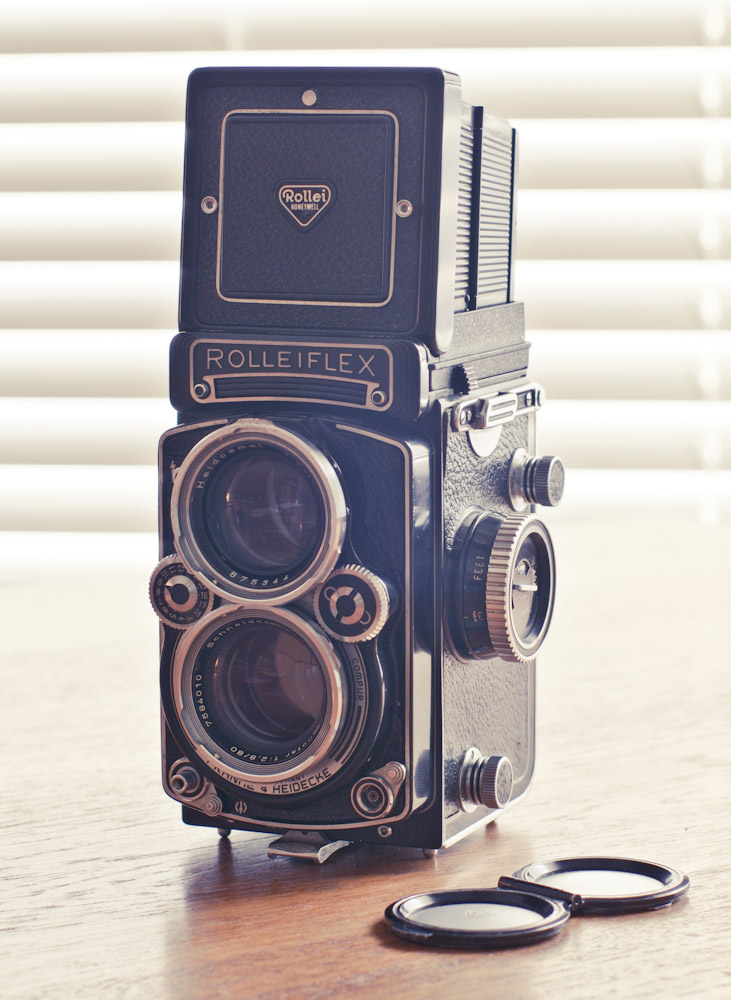
The first Rolleiflex was produced in 1928 with a 75mm f4.5 Zeiss Tessar lens according to “Rollei Photography c1952” by Jacob Deschin. My version however is a 2.8 E3 that was likely produced between 1962 and 1965. My E3 has the Schneider Kreuznach Xenotar 1:2.8/80 taking lens. When handled correctly, as in supported stably and exposed well, the images produced have an amazing amount of detail and depth to them.
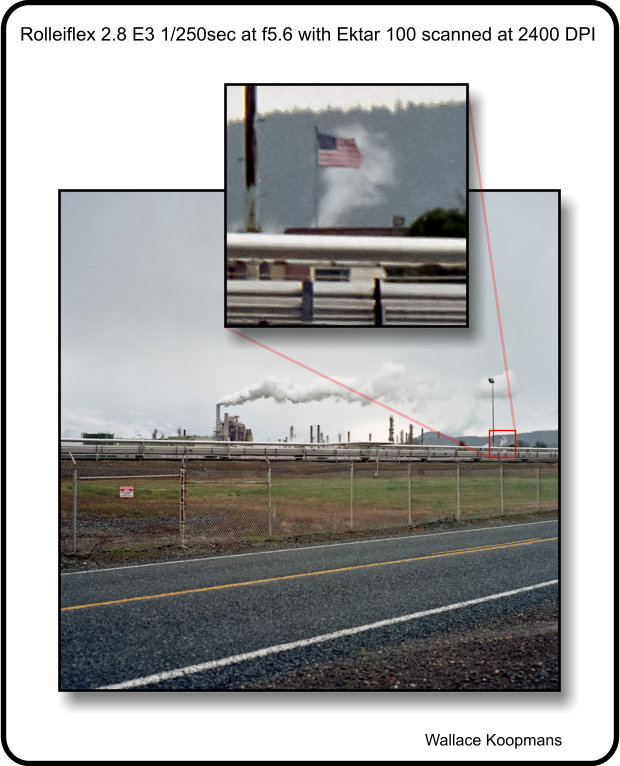
;
Most of these pictures were taken under pretty adverse conditions with high winds and pelting rain forcing me to use a golf umbrella that was eventually turned inside out by a gust. Never the less the camera did not let me down.
;
;
;
A TLR (twin-lens reflex) is in essence two camera together one for viewing the image and one for taking the picture. The image from the viewing lens is formed on the ground glass after bouncing off the internal fixed mirror. This results in an image that is right side up but reversed from left to right. This takes some getting used to because turning the camera one way or the other has the opposite effect on the screen. Because the mirror is fixed, unlike an SLR, there is negligible camera shake as the leaf shutter is tripped. The captured image is recorded on 120 film as 6cm by 6cm, this square format also takes some getting used to for composition but is a nice break from the traditional rectangular formats of most other cameras. Every aspect of this camera exudes quality it is the standard by which I judge other cameras.
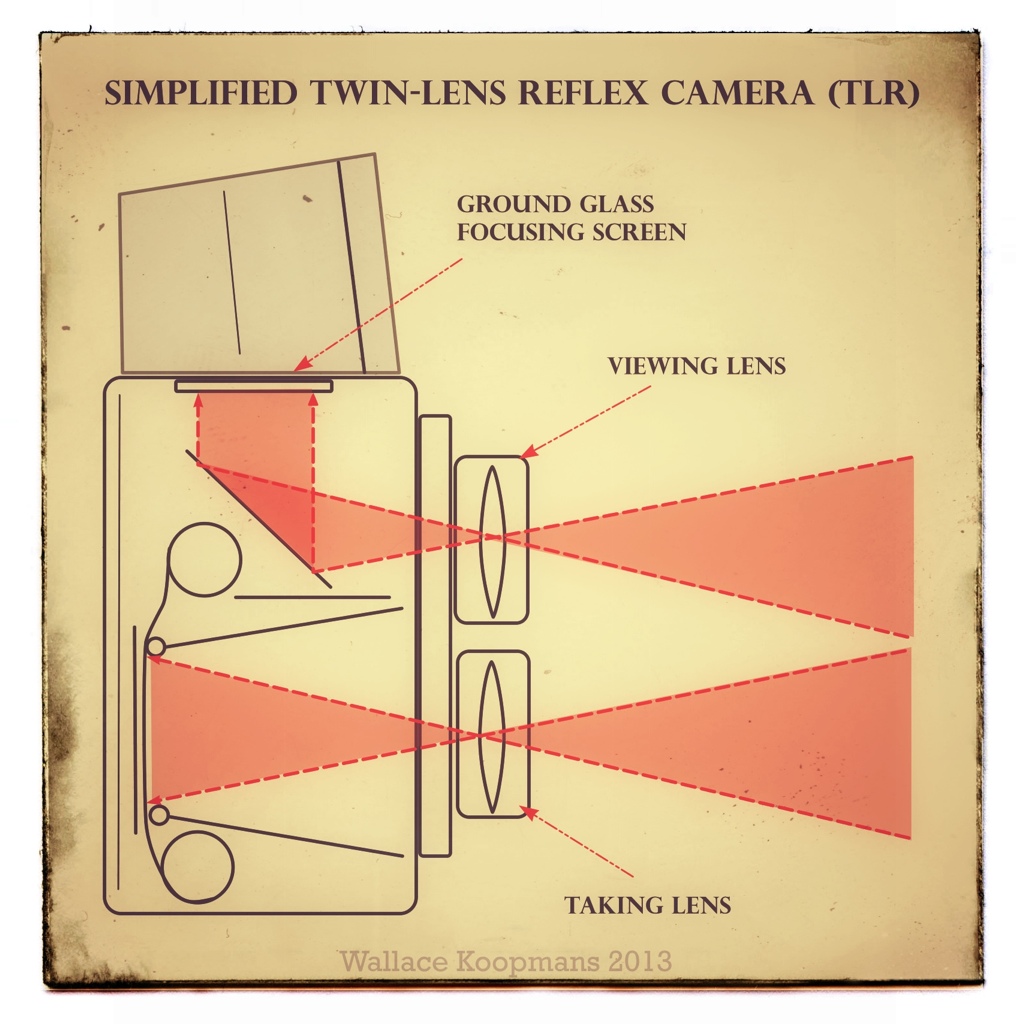
5 comments | tags: film, Photography, Rollei | posted in Cameras, Photography, Processing
Dec
29
2012
As much as I’ve always loved shooting slides the extra costs involved have limited my use of it. The choice will soon be even easier as the slide film available dwindles. Kodak of course has exited that business and Fuji has a limited selection. So almost every time I shoot using positive film in the back of my mind is that this may be the final time. In this case I shot Kodak E100Vs positive film. VS stands for vivid saturation so as you might expect the colours are vivid and saturated (That really was the best I could come up with) I had the film in my Pentax PZ1p for several months so there is a variety of scenery amongst the images. Despite the roll being 36 frames the shots are limited in number as my more personal ones are not included, but I am as pleased with those as well.
1 comment | tags: film, Kodak | posted in Photography, Processing
Dec
19
2012
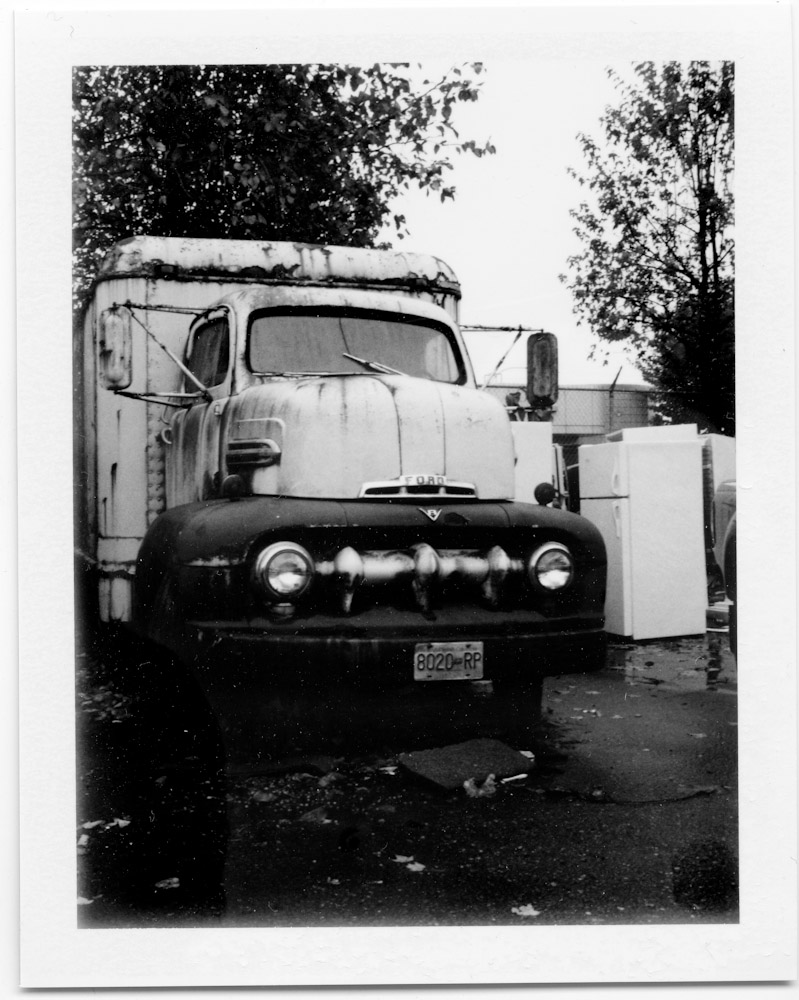
One thing you have to be careful about when handling these prints is to make sure they are dry and to keep the gunky negatives away from them. I allowed the negative to come back into contact with the print when I walked back to my vehicle and it resulted in a mess of developing fluid on the print. It did wipe off but stained the image which I have only partially obscured by darkening the blacks in the scan.
no comments | tags: Polaroid FP3000b | posted in Photography, Processing
Dec
5
2012
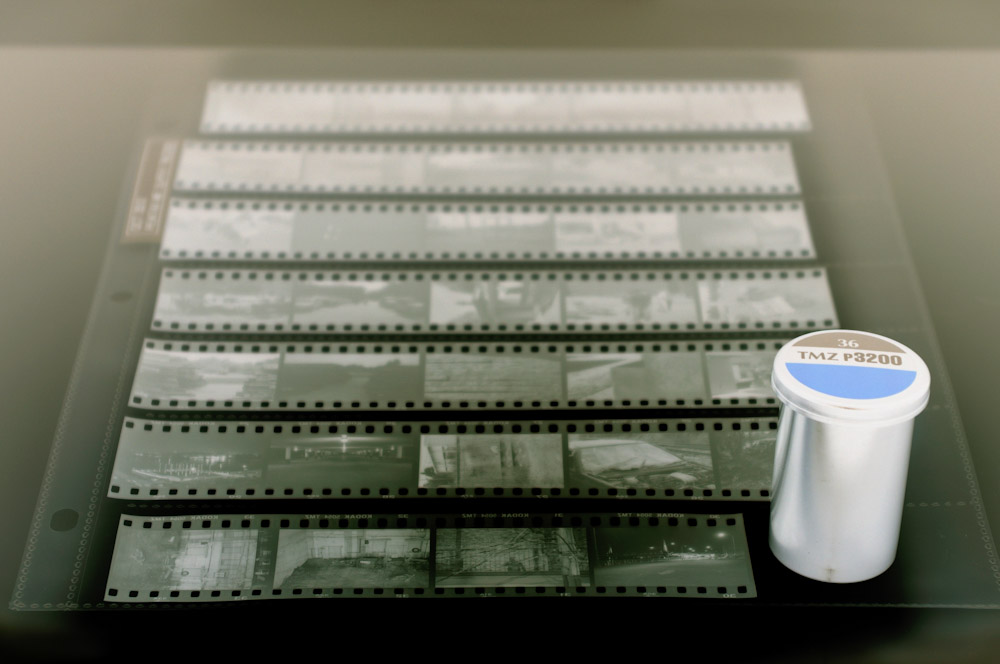
Another film bites the dust and scratches, as of October 1, 2012 Kodak has discontinued P3200 T-max. I have to admit I never really liked this film and when I did use it I got mixed results. This particular roll was severely out of date so I overexposed it by two stops. I set my camera for 800 ISO and let it be processed as if it were 3200. The result was as good as I’ve been able to achieve with this film so maybe I was on to something right before it was too late.
— DISCONTINUATION NOTICE — October 1, 2012
Due to low sales volume, Kodak is ending production of KODAK PROFESSIONAL T-MAX P3200 Film (TMZ). The demand for ultra-high speed B&W film has declined significantly, and it is no longer practical to coat such a small volume of product.
The suggested replacement is
KODAK PROFESSIONAL T-MAX 400 Film (TMY-2). The latitude of TMY-2 allows it to handle one stop of underexposure (EI 800) without being pushed. In low light situations, TMY-2 delivers very good results when exposed at EI 1600 with increased development time.
Even though P3200 is approx 2 stops faster than TMY-2 at comparable contrast levels, that extra speed comes with a very significant grain penalty. In fact, for most applications TMY-2 is actually the better film choice. The exception would be extremely low light situations where P3200 might be able to pull out some shadow detail that would otherwise be lost with TMY-2.
1 comment | posted in Photography, Processing
Dec
3
2012
What makes digital photography so great also is the source of a problem. When the barriers to taking pictures are so low you can create a difficult situation sorting through them to find the ones to keep. Keeping them all is no answer either it just delays the selection to some later time. With film there are fixed limits to how many frames of film you might have and how much you might want for later, digital blows through that barrier allowing thousands of pictures on a memory card. There is an easily determined cost to film that goes something like (Film $6 + Developing $3.00 = $9.00 /36) = about 25 cents per shot. Once you have a digital camera the per shot cost is virtually nil.
So it becomes very tempting to just keep shooting and taking a multitude of pictures with digital but it’s when you have to pick out the worthy ones while being careful to not delete something that might have a distinct value later that you might wish you had used more restraint. The upside of course is that you increase your chances of capturing an interesting moment but that can be done with film too it just requires more active participation on the part of the photographer. Instead of snapping you should be looking and thinking.

Of course I am guilty of this myself this digital “contact sheet” may illustrate my point. I spent nearly as much time going through these images as I did taking them and that is not the way I want to spend my time.
Post Script: Between the time I wrote this post and am posting it online I’ve done this again, ending up deleting more than half the pictures I took from a single day.
5 comments | posted in Photography, Processing


